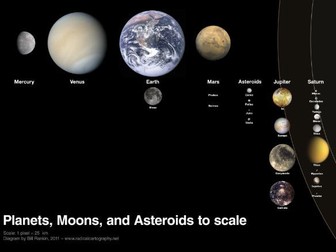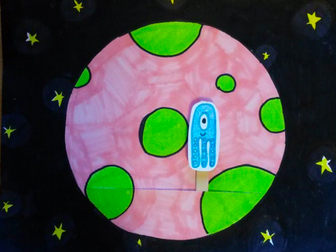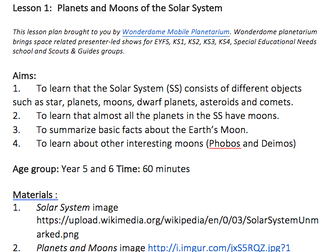Planets and Moons of the Solar System
Aims:<br />
1. To learn that the Solar System (SS) consists of different objects such as star, planets,<br />
moons, dwarf planets, asteroids and comets.<br />
2. To learn that almost all the planets in the SS have moons.<br />
3. To summarize basic facts about the Earth’s Moon.<br />
4. To learn about other interesting moons (Phobos and Deimos)<br />
<br />
Age group: Year 5 and 6<br />
Time: 60 minutes<br />
<br />
Materials:<br />
1. Information sheet 1 The Moon: Motion<br />
2. Information sheet 2 The Moon: Physical Properties<br />
3. Information sheet 3 The Moon: Appearance<br />
<br />
Introduction:<br />
In this lesson, children write down what they already know about planets of the SS and then<br />
take turns to read out their facts, look at the image of the SS and learn that almost every planet<br />
has moons and that our Moon is not unique, divided into three groups they study various facts<br />
about the Moon and then present the information to the rest of the class, learn how many<br />
moons other planets have, watch a video about the moons of Mars - Phobos and Deimos and<br />
play a Space Bingo game at the end.<br />
<br />
National Curriculum links:<br />
<br />
Working Scientifically<br />
Earth and Space


